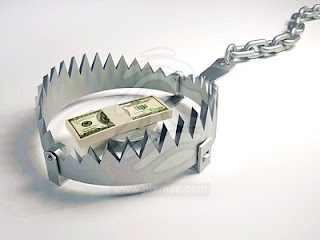Palm oil climbed to the highest level in more than two years, extending a 10-week rally, the longest since June 2007, on concerns that supplies are not rising fast enough to meet demand.
The January-delivery contract on the Malaysia Derivatives Exchange gained as much as 4.9 percent to 3,348 ringgit ($1,084) a metric ton, the highest price since July 18, 2008, and traded at 3,302 ringgit at 4:14 p.m. Prices had advanced 26 percent in the past 10 weeks.
Edible-oil prices may increase as growth in global supply fails to keep pace with the rise in demand for a third year, with weather patterns hurting crops, according to Godrej International Ltd. Director Dorab Mistry.
Palm oil may gain to 3,300 ringgit in the next few weeks and extend gains in 2011, according to remarks Mistry prepared for delivery at the DCE oilseed conference in Guangzhou, China yesterday. Soybean oil in Argentina, the largest exporter, may climb to $1,250 a ton by December, raising his forecast from $1,050, he added in a separate email.
“We have looming supply problems in wheat, in rice, in corn, in canola, in sun seed and, above all, in soybeans,” Mistry said in his speech. “We must therefore begin to give up too many thoughts of any meaningful decline in vegetable-oil prices during 2011.”
Rainfall in Malaysia, the world’s second-largest palm-oil producer, may be as 40 percent above normal in November and December as a La Nina weather event strengthens, according to the state forecaster.
Discount Narrows
Palm and soybean oils are the most consumed edible oils and are substitutes. Soybean oil in Chicago added as much as 1.2 percent to 52.85 cents a pound, extending the 1.9 percent rally on Nov. 5 to the highest intraday level since Sept. 3, 2008.
Palm oil traded in Malaysia, closed for trading on Nov. 5 for a religious holiday, tracked the rival oil higher today as soybean oil’s gains left palm oil trading at the smallest discount in four weeks, according to Bloomberg data.
Mistry, who has been in the industry for more than 30 years, correctly forcast in March that palm oil would top 3,000 ringgit after June on lower oil palm yields, and then test 3,200 ringgit. He will make his next prediction at a conference in Bali in December, he said.
Godrej is one of India’s biggest buyers of cooking oils.
“Dorab does have some effect,” said Arhnue Tan, a senior analyst at ECM Libra Capital Sdn. said of Mistry’s forecasts.
Tightening supplies and “inelastic demand” from countries including China will extend the “crazy” price rallies this year, Tao Chen, chairman of Louis Dreyfus Commodities (Beijing) Trading Co., said at the same conference yesterday.
Chinese Imports
China’s soybean imports in the 2010-2011 marketing year may be as much as 60 million tons, according to unidentified global grain trading companies cited by the China National Grain & Oils Information Center on Oct. 25. The center’s own forecast is for purchases of 54 million tons in the year that started Oct. 1, compared with 50.3 million tons a year earlier, it said.
Supplies of soybean, palm, coconut, groundnut, cotton, rapeseed and sunflower oils will rise 3.5 million tons in the year to September 2011, according to Mistry. That’s less than the 3.8 million-ton gain he forecast on Sept. 26. Demand in the same period would rise as much as 5 million tons, he said.
An El Nino-induced drought hurt oil-palm yields in Indonesia and Malaysia, the largest producers, this year, while a La Nina-induced drought delayed planting of the South American soybean crop and hurt yields.
“Weather disturbances in the form of drought, wet springs, flooding and frosts have been more evident this year than any other year I can recall,” Mistry’s text said.
In China, palm oil for September delivery in Dalian surged as much as 4.4 percent, and closed 2 percent higher at 9,466 yuan ($1,419) a ton. September-delivery soybean oil rose as much as 3.1 percent, before closing 0.3 percent higher at 10,192 yuan.
CME Group Inc.’s January palm oil contract, pegged to the Malaysian benchmark price, advanced as much as 2.9 percent to $1,081.75 a ton, the highest level since the contract began trading in May.
Link:
Bloomberg










